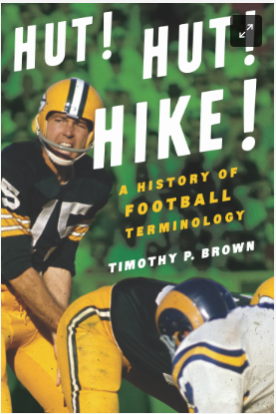Mickey Cochrane Baeball Hall of Fame Catcher
From Multi-Sport Star to Baseball Legend:
Born in 1903, Cochrane excelled in multiple sports at a young age. Initially drawn to football and basketball, he eventually chose baseball. After a standout college career at Boston University, he joined the Philadelphia Athletics in 1925. Despite never leading the league in batting average, his consistent hitting, exceptional on-base skills, and power made him a valuable offensive asset.
A Mastermind Behind the Plate:
Cochrane's true brilliance, however, shone behind the plate. He mastered game calling, anticipating pitches, and guiding his pitchers to success. His leadership extended beyond strategy. He was known for his relentless work ethic and fiery competitive spirit, inspiring his teammates to give their all on the field. This combination of skill and leadership made him a cornerstone of the famed "Connie Mack Athletics" dynasty of the 1920s and 30s.
A Champion's Pedigree:
Cochrane was pivotal in capturing three World Series titles with the Athletics (1929, 1930, and 1931). He formed a legendary battery with pitcher Lefty Grove, and their communication and on-field connection gave opposing hitters nightmares. In 1928 and 1934, he earned the prestigious American League Most Valuable Player Award, solidifying his status as one of the game's elite players.
A Career Cut Short and a Legacy Secured:
Tragically, Cochrane's career was cut short in 1937 due to a brutal beanball incident. Though he attempted a comeback, the severity of the injury forced him to retire. However, his impact on the game transcended his playing days. He managed the Detroit Tigers for several seasons and became a respected coach, sharing his knowledge and fiery spirit with the next generation of players.
A Hall of Famer and an Inspiration:
Inducted into the National Baseball Hall of Fame in 1947, Mickey Cochrane inspires catchers and baseball fans. He embodied the ideal catcher: a skilled defender, a leader on the field, and a crucial offensive contributor. His legacy lives on through his achievements, the dominance of the teams he played for, and the respect he commanded from teammates and opponents.
Mickey Cochrane life and career biography. Born April 6, 1903, in Bridgewater, Massachusetts, was Baseball Hall of Fame catcher Mickey Cochrane. Cochrane played for the Philadelphia A's and Detroit Tigers and managed the Detroit Tigers 1934–38. Mickey was an MLB All-Star 1934and 35; won World Series Titles 1929, 1930, and 1935; American League MVP in 1928 and 1934.
Duke Snider The Silver Fox and a Dodgers Legend
Born September 26, 1926, in Los Angeles, California was Baseball Hall of Fame outfielder Duke Snider. This legend was an eight-time MLB All Star. Snider was on the World Series Champion 1955, 59 with the Brooklyn and Los Angeles Dodgers. He also later played for the New York Mets and the San Francisco Giants.
Early Years and Rising Star: Born in Los Angeles in 1926, Snider's talent was evident from a young age. After a brief minor league stint, he joined the Dodgers in 1947, initially struggling to find his footing. However, his potential shone through, and by 1951, he emerged as a force to be reckoned with.
A Career Hallmarked by Power and Consistency: With his unorthodox stance and effortless swing, Snider became a feared slugger. He clubbed 40 or more home runs in five consecutive seasons from 1953 to 1957, averaging 42 homers, 124 RBIs, and a .320 batting average during that stretch. He earned eight All-Star selections, won a Silver Slugger Award, and finished his career with 407 home runs, ranking him 15th all-time at the time of his retirement.
A Key Pillar of the Dodgers' Dynasty: Snider played a crucial role in the Dodgers' dominance during the 1950s. He was part of the legendary batting order known as "Murderers' Row," alongside Jackie Robinson, Pee Wee Reese, and Gil Hodges, leading the team to World Series victories in 1955 and 1959. His calm demeanor and leadership qualities earned him the respect of teammates and fans alike.
Adapting to a New Coast: When the Dodgers relocated to Los Angeles in 1958, Snider's production dipped slightly, likely due to adjusting to a new ballpark. However, he remained a valuable contributor, leading the team in home runs in 1960 and helping them reach the World Series in 1963.
Dennis Rodman Top NBA Defender
-Rise to Hoops Stardom
Rodman's journey to basketball stardom wasn't linear. Drafted late in the second round by the Detroit Pistons in 1986, he initially struggled to find his place. However, under coach Chuck Daly, Rodman blossomed into a defensive force. His relentless hustle, exceptional rebounding instincts, and ability to defend multiple positions made him a perfect complement to the Pistons' "Bad Boys" era. Despite limited offensive skills, Rodman's impact was undeniable. He led the NBA in rebounds for a record seven consecutive seasons (1992-1998) and played a crucial role in Detroit's back-to-back championships in 1989 and 1990.
Rodman's unconventional personality often overshadowed his talent. His well-publicized off-court antics, including late nights and flamboyant appearances, created friction with coaches and teammates. Yet, his competitive fire on the court remained undeniable. In 1995, he joined the Chicago Bulls, forming a formidable partnership with Michael Jordan and Scottie Pippen. Despite initial concerns about his fit, Rodman thrived under Phil Jackson's system, focusing his energy on rebounding and defense, contributing to the Bulls' historic three-peat in 1996, 1997, and 1998.
- Legacy of the Worm
Rodman's career transcended statistics. He brought a level of intensity and focus to the defensive end rarely seen before. His ability to disrupt opponents' plays and secure rebounds allowed his teammates to flourish on offense. He redefined the role of the power forward, showcasing that success could be achieved outside the traditional mold.
-Basic Information and Early Life
Born May 13, 1961, in Trenton, New Jersey, was Naismith Memorial Basketball Hall of Fame Forward Dennis Rodman. Known as the Worm, Rodman was a defensive and rebounding phenom during his playing days. Dennis played for the Detroit Pistons, San Antonio Spurs, Chicago Bulls, Los Angeles Lakers, and Dallas Mavericks of the NBA. He earned NBA All-Defensive First Team honors seven times and won the NBA Defensive Player of the Year Award twice. He also led the NBA in rebounds per game for a record seven consecutive years and won five NBA championships. On April 1, 2011, the Pistons retired Rodman's No. 10 jersey.
Buck O'Neil
O'Neil's playing career began in 1937, bouncing around before finding a home with the Kansas City Monarchs in 1938. He carved out a solid career as a first baseman, with four seasons batting over .300 and a career average of .288. World War II interrupted his playing time, but he returned strong, even managing the Monarchs for a period.
However, O'Neil's influence extended beyond the batter's box. He had a keen eye for talent, later becoming a scout and signing future Hall of Famers like Lou Brock. He also broke barriers in 1962, becoming the first Black coach in Major League Baseball history.
Born November 13, 1911, in Carrabelle, Florida, was Baseball Hall of Fame First Baseman Buck O'Neil. This legend was a three-time All-Star and was on the Negro League World Series Champion Kansas City Monarchs of 1942. Buck spent 10 of his eleven years in baseball with the Monarchs but played his first year as a Memphis Red Sox roster member. O'Neil became a scout and then the first African-American coach in the MLB.
Omar Visquel Legendary Shortstop
-Defensive Wizard: Widely considered one of the greatest fielding shortstops ever, Vizquel boasts an MLB record 11 Gold Glove Awards, including a historic nine consecutive wins from 1993 to 2001. His smooth glovework and exceptional range at shortstop were a sight to behold.
-Durability and Consistency: Vizquel holds the record for most games played at shortstop (2,709) and is the leader in total double plays turned by a shortstop. This incredible consistency speaks volumes about his dedication and longevity.
-Solid Offensive Contributor: While defense was his calling card, Vizquel wasn't a slouch at the plate. He compiled a respectable .272 lifetime batting average with over 2,800 hits, 400 stolen bases, and the ability to contribute offensively throughout his career.
-Accolades and Accomplishments: A three-time All-Star, Vizquel played for several teams including the Cleveland Indians, San Francisco Giants, and Chicago White Sox. Though he never won a World Series championship, his defensive brilliance and stellar career make him a deserving candidate for the Baseball Hall of Fame.
Born April 24, 1967, in Caracas, Venezuela, was legendary MLB Shortstop Omar Visquel. 24-year Major League Baseball career, Vizquel played for the Seattle Mariners, Cleveland Indians, San Francisco Giants, Texas Rangers, Chicago White Sox, and Toronto Blue Jays.
Baseball's all-time best fielding shortstops, Vizquel won 11 Gold Glove Awards, including nine consecutive from 1993 to 2001. Among shortstops, his .985 fielding percentage is tied for highest all-time, he is the all-time leader in games played, and the all-time leader in double plays turned. Visquel is one of the top MLB players to have worn the Number 13 Jersey. one of the top MLB players to have worn the Number 11 Jersey. MLB Number 11 Jersey
Barry Larkin Hall of Fame Shortstop
Few players embody the spirit of a single franchise like Barry Larkin and the Cincinnati Reds. A hometown hero drafted by the Reds in 1985, Larkin spent his entire 19-year career wearing the iconic red pinstripes. This essay delves into the remarkable journey of a shortstop who cemented his place among baseball's elite.
Larkin's on-field brilliance was undeniable. A smooth-fielding shortstop with a cannon for an arm, he earned three Gold Glove Awards, his defensive wizardry a constant source of awe for fans. But his impact extended far beyond the glove. A gifted hitter with a sweet swing, he compiled a career batting average of .295, racking up over 2,500 hits and 198 home runs. His clutch hitting was legendary, with a knack for delivering in big moments.
Larkin's leadership qualities were another hallmark of his career. He captained the Reds to the 1990 World Series championship, displaying composure and grit under pressure. He was a vocal leader in the clubhouse, respected by teammates and opponents alike.
However, Larkin's story transcends statistics and championships. He played during a transitional period in baseball, a bridge between the "dead-ball" era and the offensive explosion of the late 1990s. He exemplified the complete player, skilled in all facets of the game.
Baseball Hall of Fame bio on Barry Larkin. Born April 28, 1964, in Cincinnati, Ohio, was Baseball Hall of Fame Shortstop, Barry Larkin. Larkin played for his hometown Cincinnati Reds for his entire career 1986-2004.
Barry made the most of his baseball career in the Majors as he was named to nine Silver Slugger awards, three Gold Glove awards, and the 1995 National League Most Valuable Player Award. He was selected to the Major League All-Star Game twelve times and is one of the top MLB players to have worn the Number 11.
The Baseball Brilliance of Richie Ashburn
Yet, for two decades, his impact on the Philadelphia Phillies and the National League was undeniable. This essay explores the career of Ashburn, a two-time batting champion and a Hall of Fame outfielder who captivated fans with his talent and hustle.
Ashburn's professional journey began in 1948, immediately making a splash as a rookie with the Phillies. His .333 batting average and All-Star selection showcased his exceptional hitting ability and a keen eye at the plate. He wasn't a power hitter, but his consistency and speed on the basepaths made him a constant threat. In 1951, Ashburn led the National League in hits three times throughout his career, a testament to his consistent contact hitting.
Defense was another hallmark of Ashburn's game. He routinely led the league in outfield putouts, displaying a smooth glove and a strong arm in centerfield. His baseball IQ and instincts made him a valuable asset in the Phillies' defensive scheme.
Despite his talent, Ashburn's tenure with the Phillies wasn't without challenges. The team struggled to achieve consistent success, and in 1960, he was traded to the Chicago Cubs. Though many saw it as the end of his prime, Ashburn rebounded with several productive seasons with the Cubs and later, the New York Mets.
Ashburn also played the positions of Left Fielder, Right Fielder, and Second Baseman wearing the Number 1 on the Philadelphia Phillies (1948-59), Chicago Cubs (1960-61), and New York Mets (1962). He is considered one of the top MLB players to have worn the Number 1 Jersey.
Roberto Luongo A Butterfly of Brilliance Takes Flight - Hall of Fame Goalie's Career
Early Promise and International Accolades: Hailing from Montreal, Quebec, Luongo's talent shone brightly from a young age. He was drafted fourth overall by the New York Islanders in 1997 and quickly established himself as a rising star. Luongo represented Canada internationally, winning gold medals at the 2002 World Championships and the 2010 Olympics, solidifying his position as a world-class goaltender.
A Decade of Dominance with the Canucks: After stints with the Islanders and Florida Panthers, Luongo found his true home with the Vancouver Canucks in 2006. His arrival coincided with the rise of a young, talented core. Luongo's acrobatic saves and exceptional positioning became the backbone of the Canucks' success. He led the team to the 2011 Stanley Cup Finals, earning him a nomination for the Vezina Trophy as the league's best goaltender.
A Legacy of Excellence: Luongo's career achievements are impressive. He ranks second all-time in games played by a goaltender (1,044) and third in wins (489). He won the William M. Jennings Trophy for the fewest goals allowed in a season and was a two-time NHL All-Star. Beyond statistics, Luongo's impact goes deeper. He was a respected leader, a fan favorite, and a competitor who pushed himself to excel even on the biggest stages.
More Than Just Stats: Luongo's influence transcended the win column. He was a pioneer for Canadian goaltenders, inspiring a generation with his work ethic and dedication. His calm demeanor under pressure and ability to bounce back from setbacks were hallmarks of his character.
A Hall of Fame Career: In 2022, Roberto Luongo's dedication to the game was recognized with his induction into the Hockey Hall of Fame. His legacy as a world-class goaltender, a fierce competitor, and a role model is secure. He leaves behind a glittering career that will continue inspiring aspiring hockey players for years.
Hit 'Em Where They Ain't The Enduring Legacy of "Wee Willie" Keeler
Keeler's legacy rests upon his remarkable batting prowess. He compiled a career batting average of .341, placing him among the all-time greats. Notably, he achieved a phenomenal .400 batting average or above once in 13 consecutive seasons, with an average exceeding .300, showcasing his remarkable consistency. His 1897 season stands out, etching his name in the record books with a staggering .424 average, the highest single-season mark by a left-handed hitter, which remained unbroken for over four decades.
Beyond his batting average, Keeler mastered getting on base, achieving an on-base percentage above .400 for seven consecutive years. He understood the value of reaching base consistently, even through walks or singles, and his approach proved highly effective in generating runs for his team.
He wasn't just a one-dimensional player. Keeler displayed remarkable speed on the basepaths, stealing over 50 bases several times. Additionally, his fielding improved significantly after transitioning from third base to the outfield, ultimately becoming a reliable defender.
Keeler's impact transcended the statistics. He embodied a more strategic style of play, emphasizing precision and efficiency over brute force. His famous quote, "Keep your eye clear, and hit 'em where they ain't," captured his philosophy – prioritizing placing the ball strategically rather than aiming for home runs.
In a sport often dominated by power hitters, "Wee Willie," Keeler carved his path. Through remarkable batting consistency, a calculated approach, and an unwavering dedication to the game, he established himself as a legend, leaving an indelible mark on baseball history and inspiring future generations of players and fans.



.jpg?https://jerseydispatch.com/pfeL/p/c312642c0431e75b485e432232c99c1c/website/Daily-Sports-Uniform-Number-History/February/February-8-Jersey-Numbers/Images/.Basketball_at_Pas-en-Artois,_France,_1918_(20166469838).jpg)
.jpg?https://jerseydispatch.com/pfeL/p/c312642c0431e75b485e432232c99c1c/website/Sports-History-Photo-of-the-Day/February-Images/February-8-Image/images/.640px-Arctic_Sisterhood_Basketball_banner,_Nome_(NOWELL_200).jpg)





